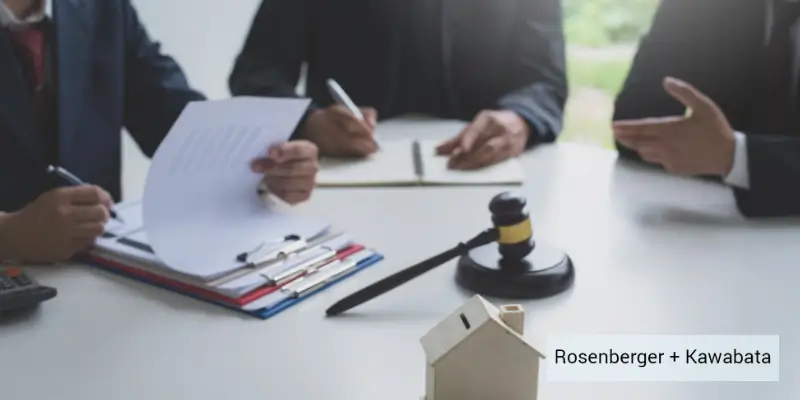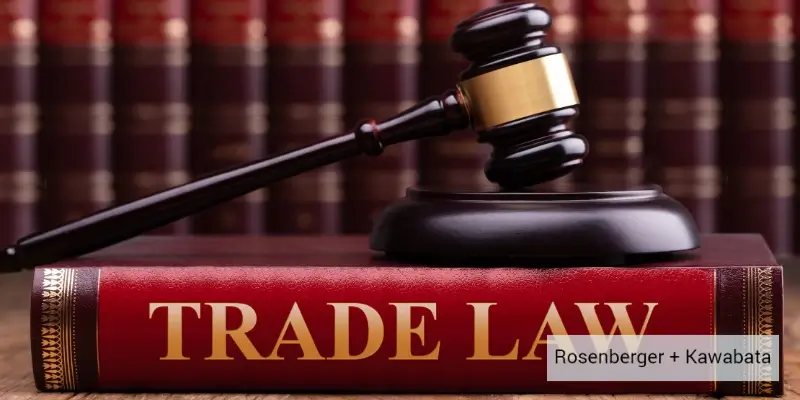Arizona Excessive Trading Lawyer
Arizona Excessive Trading Attorney

While many people have a basic understanding of how to buy and sell securities, investors often choose to entrust trading decisions with their investments to a brokerage firm. When all goes right, brokers execute strategies that align with the investor’s goals and can be trusted with making these important decisions. Unfortunately, there are some cases where the broker engages in unethical practices. That’s when it’s important to talk to an Arizona excessive trading lawyer.
The attorneys at The Rosenberger + Kawabata help protect investors in Arizona from brokers who make too many trades to benefit themselves. One common unethical – and illegal – trading practice is “churning.” The sad truth is churning is a common tactic unethical brokers use to earn more money for themselves at the expense of the investor. By better understanding what churning is and how to identify it, you can better protect yourself and your assets from corrupt brokers.
What Is Churning?
Churning is a term used for excessive trading, which occurs when a broker is unnecessarily buying and selling through their customer’s accounts to generate more commissions for their own benefit. In most cases of churning, the investor themself does not benefit from these trades while still facing all the risk.
Brokers typically earn a commission on every trade they make on behalf of the investor, which can make it tempting to make unnecessary trades to increase the amount of money they receive. This unethical practice can result in the investor losing a copious amount of money from their accounts often without realizing it until it’s too late.
How Is Churning Determined in Arizona?
While it can be challenging to identify churning activities, regulators play a big role in helping to keep these unethical practices at bay. Regulators monitor broker activities to ensure they are acting within the confines of the law. Between these regulators and the vigilance of investors monitoring their own accounts, excessive trading won’t go unnoticed forever.
There are two main methods people can use to determine if churning activities are present, and both include using statistical formulas. These two methods are to calculate the cost-equity ratio and turnover rate.
- Cost-equity ratio. The cost-equity ratio, also called breakeven percentage, measures the total costs incurred from an investment strategy over one year. It’s calculated by dividing the total annual costs by the average account balance throughout the year.
- Turnover rate. The turnover rate, or annualized turnover ratio, measures the overall activity level on an account in one year. It’s calculated by dividing the total annual purchases by the average balance of the account throughout the year. A high turnover rate correlates with a high level of activity in the account, and that translates to more brokerage transaction fees. All told, this results in more money in the broker’s pocket.
However, many brokers can artificially inflate this percentage in order to generate more fees for themselves. Depending on the specific circumstances, a turnover rate between three and six may set off warning bells for churning.
When regulators or investors do detect churning, they can take legal action against the responsible parties to shut down the illegal practices and recover damages. Another aspect of regulators’ responsibilities is to educate investors about unethical trading practices, so they can be better equipped to spot misconduct in the future.
Top-Tier, Forward-Thinking Advocacy It’s what we do all day, every day.
How to Protect Yourself From Churning in Arizona
The easiest way to protect yourself from excessive trading in Arizona is to do your research before working with a broker or financial advisor. The Arizona Corporation Commission has a database that allows you to research investments, securities dealers, salesmen, and more, so you can better understand a deal before committing to anything.
Moreover, it’s important to stay informed about your assets and investments even if a broker is handling the trading for you. The Arizona State Retirement System reports historical annualized rates of return each year. Fiscal year 2023-2024 showed an average return of 9 percent.
Understanding the market environment can help you stay up to date on trends and spot any inconsistencies within your portfolio. The Arizona Central Credit Union suggests reviewing and adjusting your portfolio a couple of times a year if possible.

FAQs About Excessive Trading and Churning Law in Arizona
Why Is Excessive Trading Bad?
Excessive trading, also known as churning, is illegal because it involves brokers taking part in unnecessary trading in your account to receive higher commissions for themselves. In most cases, this excessive buying and selling is done without any consideration for the investor’s investment goals and is solely for the benefit of the broker.
How Do I Get Proof of Churning in Arizona?
It can be challenging to recognize the signs of excessive trading when it’s happening, especially because brokers can often easily make somewhat concrete excuses for their “trading strategies.” Common ways to prove churning is to use statistical formulas to calculate factors like cost-equity ratio, turnover rate, and the use of in-and-out trading in an investor’s account.
What Does Turnover Rate Mean in Regard to Financial and Investment Trading?
Turnover rate refers to the overall level of trading activity on an account in one year. It’s calculated as a percentage and demonstrates how many mutual funds or other portfolio holdings have been replaced over the year. The higher this number is, the more a broker can generate in transaction fees. In cases of churning, a broker may artificially increase the turnover rate to generate commission for themselves.
What Is the Penalty for Churning in Arizona?
Churning, or excessive trading, is illegal at the federal level and can result in a variety of different penalties. The Securities and Exchange Commission (SEC) takes these violations very seriously, so you can expect them to actively pursue legal action. Most commonly, unethical brokers who engage in excessive trading can face penalties such as criminal charges, fines, and license suspension or revocation.
Reach Out to An AZ Churning Attorney to Learn How to Protect Your Assets
If you suspect you’ve been a victim of churning, it’s wise to reach out to an Arizona excessive trading lawyer to investigate further. A knowledgeable AZ churning lawyer can recognize the signs of excessive trading and help you build a case against your broker to ensure you recover the appropriate damages and get the justice you deserve.
Our team at Rosenberger + Kawabata has experience handling cases involving financial or investment loss and is ready to fight for you to receive the maximum amount of compensation possible. Contact our office to get in touch with our skilled attorneys and set up a consultation today.

